How to Buy a Leather Briefcase: The Ultimate Guide
Learning how to buy a leather briefcase is tough.
You need to consider the type of leather, components, lining, style, budget, and much more. There are so many factors that make the perfect leather briefcase that it’s difficult for the average guy to tell the difference between a $200 and $2,000 briefcase.
For said average guy, even in a modern work setting, we suggest durable, vegetable tanned leather with convenient zip-top closures. If you’re in a casual office, we’ll also consider a more relaxed canvas or twill bag with leather accents.
And look, we’ve reviewed a ton of leather bags, from backpacks to messenger bags and quite a few briefcases, and we’ve learned that getting the right size, construction, materials, and style takes quite a bit of research. So, to save you all that time and energy, we’re breaking down what to look for in a leather briefcase, from casual, rugged options to those heirloom pieces meant to last a lifetime.
7 Tips For Buying A Quality Briefcase
The idea of a briefcase has evolved significantly over time. Gone are the days when an attache or a hard-shelled case was the norm. The market is filled with options catering to every style and need. But for something this durable, we prefer something “fashionproof” — a briefcase with a timeless, simple, and minimalist look that won’t be embarrassingly dated when you’re still using it in a few decades.
The same tips for buying a quality leather briefcase haven’t changed much in the last 100 years.
Further Reading
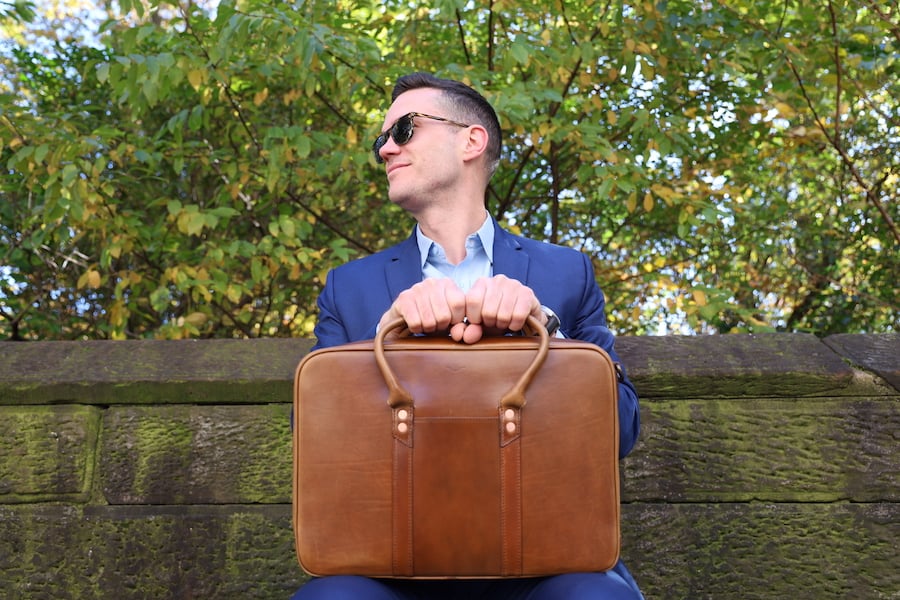
Best Leather Briefcases For Men
The office might be uncool, but you don’t have to be. From rugged to dressy, you can find a briefcase that works for you. Check out how →

1. Prioritize High-Quality Leather
When looking to buy a leather briefcase, the foremost consideration should be the quality of the leather. Do not simply settle for the word “leather” or “genuine leather.” Instead…
Full Grain Leather
Full grain leather still has the outer layer of the hide intact. It hasn’t been removed or corrected to make it thinner (ie. less durable) or give it a super smooth, sometimes plasticky look. Usually, the “grain” from the animal’s natural skin is still visible. Full grain leather is strong, durable, and ages well.
Note that this type of leather retains the natural imperfections and textures of the hide, adding character and uniqueness to each briefcase. Full grain leather makes a huge difference in aesthetics and increases the overall lifetime of the bag. It may sound like you’ll get a bag that looks better suited for a Gold Rush, but trust us: full grain is a sign of quality that people respect.
An uncomplicated, sleek design that fits into business or casual settings, the brand's transparency, and sustainable practices places puts this bag in our top spot.
One of the most remarkable features of full grain leather is its ability to develop a patina over time. This natural aging process enhances the leather’s aesthetics, making it more beautiful as it gets older. Full grain leather briefcases are not just functional; they’re pieces that tell a story, evolving with your personal and professional journey.
It’s worth noting that many brands market their leather as “full grain” when it’s been slightly corrected to remove serious inconsistencies. That’s not the end of the world, but try to ensure before buying that the leather isn’t thin and plasticky like cheap corrected leathers. (A good example of bad, thin, over-corrected leather? Dr. Martens boots.)
To be honest, we don’t have much of a problem with corrected leather if the way it’s tanned is right. Which brings us to…

Vegetable Tanned Leathers
If you’re not familiar with the science of tanning, practically all leather is either vegetable-tanned or chrome-tanned (or “combination tanned” with elements of both). Chrome tanning is cheaper and newer, invented in the 19th century, while vegetable-tanned leather has existed for thousands of years.
It takes more time, requires more skill, and uses tannins found in tree bark and vegetable matter. Because it’s less harsh on the fibers, many consider it more durable than chrome tanned and ages better.
(Chrome tanning has its merits, especially for footwear, as it’s softer and more comfy, and good chrome tanned leather bags exist, but we prefer vegetable tanned when possible because it’s a stronger guarantee of quality.)
My Pick For Vegetable Tanned Leather Briefcase
An uncomplicated, sleek design that fits into business or casual settings, the brand's transparency, and sustainable practices places puts this bag in our top spot.
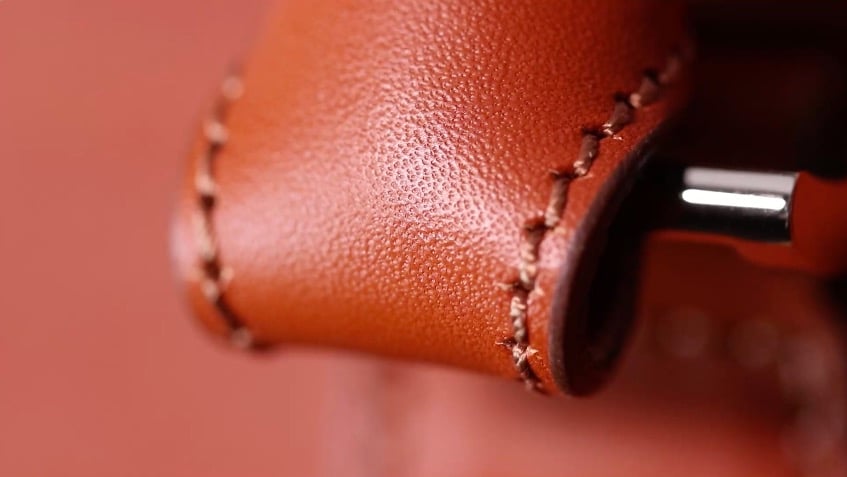
Vachetta Leather
One of the most famous vegetable-tanned leathers in really high-end briefcases is Vachetta leather. It is renowned for its natural, untreated finish and ability to develop that rich patina, enhancing its aesthetic appeal with use. Known for its durability and fairly uniform texture (because it’s typically calfskin), Vachetta is often used in luxury leather briefcases and combines the durability of “veg” tanning with the luster and uniformity of chrome tanning.
My Pick For Vachetta Leather Briefcase
Carl Friedrik makes luxury bags with all the finer touches of Prada or Coach, but their streamlined business model keeps them under a thousand bucks.
Chevre Goat Leather Briefcase
Frank Clegg, a well-known bag maker in Massachusetts, uses Chevre leather on some of his bags. This is a high end, veg-tanned goat leather known for its characteristic grain pattern. Goat leather is stronger than cow leather even though it’s thinner, so the bag may have a less structured appearance, but they’re lighter in weight. For example, the goatskin Commuter bag by Clegg is 3 lbs, while the cowhide version is 3.4 lbs.
Further Reading
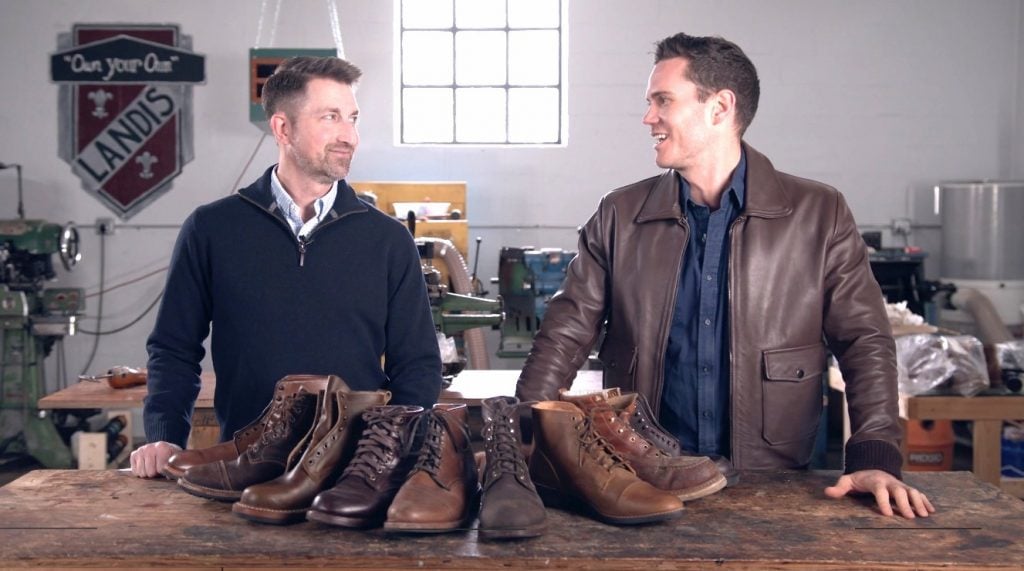
If you like American-made products, we have a list of the best boots made in the USA Check out how →
My Pick for Chevre Leather
Goatskin is both stronger and thinner than cowhide and while it's known for a less consistent look, Frank Clegg carefully selects the highest end, vegetable tanned hides with a terrific aesthetic.
Bridle Leather
Lastly, bridle leather is an extra hardy, veg-tanned leather that’s infused with extra oils, making it darken over time while developing surface cracks that reveal lighter layers underneath. The best-known tannery for bridle leather is Pennsylvania’s Wickett & Craig.
Originally made for horse bridles and saddles, briefcases made from bridle leather are a great combination of durability and quality.
My Pick for Bridle Leather Briefcase
It's cotton, sure, but this thick, hard-wearing twill with vegetable tanned leather accents is an unparalleled classic briefcase with extraordinary versatility and durability.
Chrome Tanned Leather
Today, some 99% of leather is chrome tanned: it’s faster, cheaper, softer, and can be dyed more colors. There are reasons to like a good chrome tan, but if you’re talking about bags — which don’t need to break it in like your standard veg tanned boot — we recommend vegetable tanning.
Other Materials
If you’re looking for something that’s not leather, we strongly recommend canvas or twill, two kinds of very densely woven cotton. You’ll sometimes see these fabrics waxed because it adds water resistance and makes them age more dramatically, though it’s a more rugged, outdoorsy look.
Canvas and twill differ in that twill weaves are complex and produce diagonal lines on the surface (like your jeans, which are twill), while canvas is a plain weave with a more subtle cross-hatched look. These cotton weaves are phenomenally durable, often carrying lifetime warranties, and are a practical and stylish alternative for those who prefer not to use animal products or seek a different aesthetic. (I definitely prefer cotton bags when I’m wearing a leather jacket.)
Brands often combine high quality leather accents with canvas/twill. Solid brands with solid twill options are Cravar and Filson.
Further Reading
Complete your look with a rugged and durable waxed canvas jacket. Check out how →

2. Check the Components
The durability of a leather briefcase are significantly influenced by the materials used in its construction. This includes the hardware, handle, shoulder strap fittings, metal zippers, and metallic rings.
You can have the best leather, but if it is held together by cheap hardware, you won’t get the benefits of the leather’s strength.
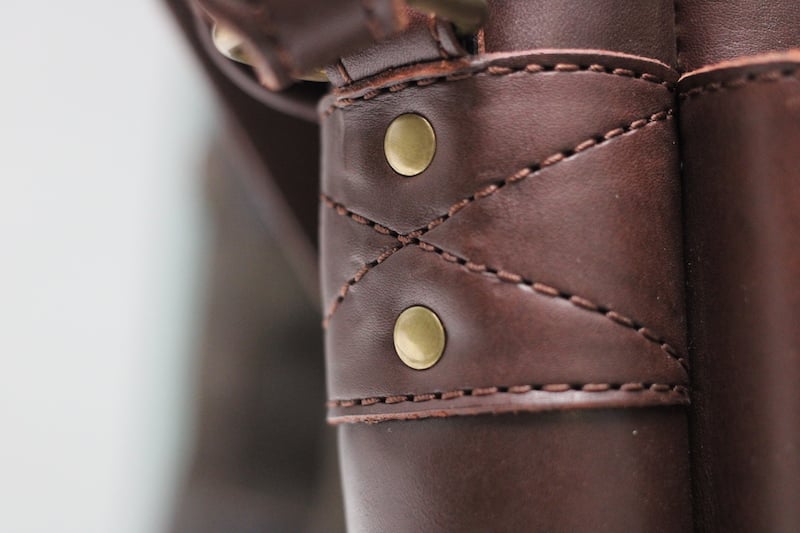
Rivets
Rivets should be present at key stress points like handle sides, closure buckles, front pouch buckles, strap hooks, and shoulder strap attachments. If they’re stitched instead, at least make sure you’ve got several rows that criss cross.
Zippers
Some brands in this space, like Cravar and Saddleback, avoid zippers in most of their bags because even the best on Earth can break.
But zippers still have obvious benefits, so if you want one, it must be sturdy and reliable. Opt for metal zippers, as they are more durable than plastic ones, and look for brands like YKK, Filson, and Riri.
If you’re able to handle the bag, the zipper should operate smoothly without catching or jamming, ensuring ease of access while securing the contents of the briefcase effectively. That said, when a heavy duty zipper is new, it can need some time “break in” before running smoothly.
Brands like Carl Friedrik take their zippers to another level, using silver nickel-finished zippers with every tooth in the zip individually brushed and polished. They are soft and won’t scratch or damage laptops and valuables you shove in the bag. This is the one “con” of heavy duty zippers: especially when they’re new, they can scratch laptops — and skin.
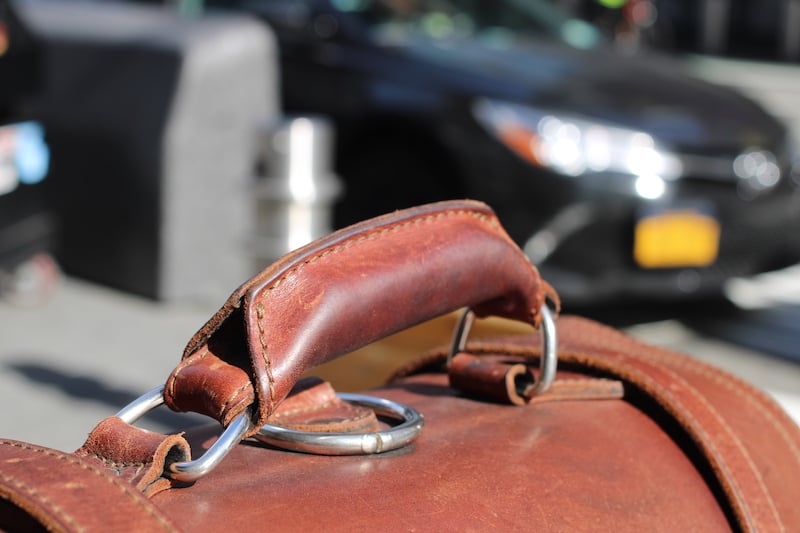
Handles
The handle of a leather briefcase is not both a functional and aesthetic element. Good quality handles should feel comfortable to grip and be securely attached to withstand the weight of the briefcase’s contents.
Look for handles that are reinforced with additional stitching or metal fixtures where they connect to the bag. This reinforcement is crucial for durability, as a carry handle is the most likely part to tear away.
An ergonomically designed handle can significantly enhance the carrying comfort of the briefcase, making it easier to handle during long commutes or travels.
We like leather handles to be round or wide in order to better disperse load in the hand and mold to its shape with time.

Shoulder Strap Fittings
Shoulder strap fittings in a leather briefcase should be strong and adjustable. These fittings not only have to bear the weight of the briefcase but also provide flexibility and comfort to the user.
In a quality leather bag, the shoulder strap fittings are often made of robust materials like brass, copper, or stainless steel to ensure longevity and resilience against wear and tear.
The option for a detachable shoulder strap adds versatility to the briefcase, catering to different carrying styles, whether hand-held or over-the-shoulder. We also like strap pads where the strap meets the shoulder to disperse load better, and ideally the fixture will swivel in order to make it easier to adjust a twisted strap.
Locks
Locks on a briefcase, be it a twist lock or key lock, are essential if you want extra security. They should be easy to operate while providing a secure closure.
Locks should complement the aesthetic of the briefcase while being functional. A well-designed lock secures the briefcase and adds to its overall elegance and professional appearance.
This feature has become increasingly unpopular in briefcases because they typically clutter the aesthetic and make it harder to get in and out of the bag on the go, so this may be an element you’ll need to forego.
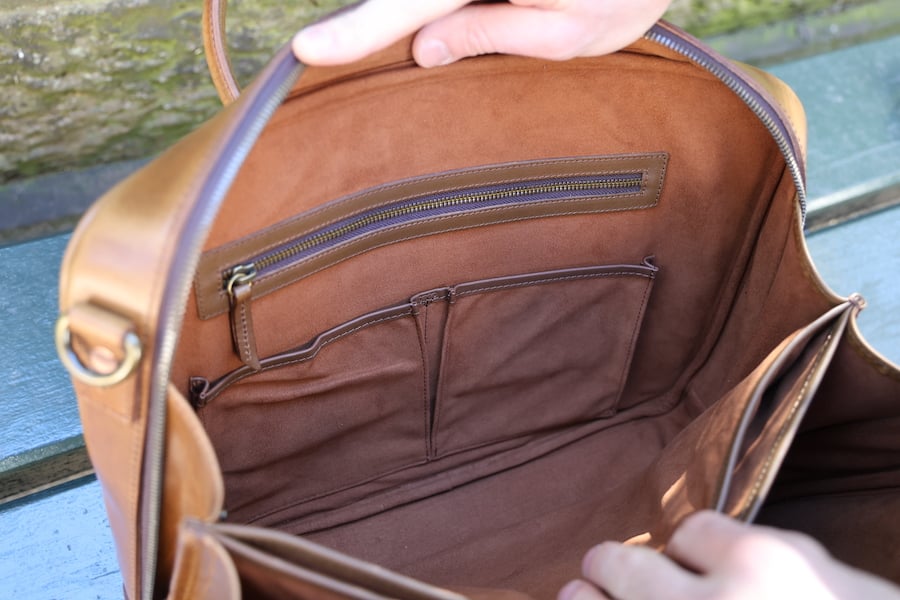
3. Lining
A lot of people like a lined briefcase, but it’s not a requirement. First, we’ll look over some pros and cons regarding lining.
Pros:
- Shape Retention: Lined briefcases tend to maintain their shape better over time, providing a structured look even with extensive use.
- Durability: Many liners, especially those made from materials like ballistic nylon, add an extra layer of durability, making the briefcase more resistant to wear and tear.
- Protection of Contents: Linings made from water-resistant materials offer additional protection against moisture for electronics and other sensitive items.
- Aesthetic Appeal: A quality lining can enhance the internal appearance with a pop of color, adding to its overall aesthetic and feel.
Cons:
- Potential for Wear: Over time, linings, especially those of lower quality, can wear out or tear, which might require repair or replacement. No lining is as durable as that leather shell.
- Additional Weight: A lined briefcase can be slightly heavier than an unlined one, which might be a consideration for those who prefer a lighter bag.
- Reduced Flexibility: Some linings can reduce the overall flexibility of the briefcase, making it less adaptable to irregularly shaped contents.
Common Lining Materials
- Cotton: A tear-resistant textile that offers a soft touch and can contribute to the briefcase’s durability and shape retention.
- Nylon: Known for its strength and durability, nylon linings are common in briefcases, particularly variants like ballistic nylon at the higher end.
- Water-Resistant Materials: Some briefcases feature liners made from water-resistant fabrics, like ripstop polyester, providing an extra layer of protection for the contents. This is particularly valuable in safeguarding electronics.
- Suede: Briefcases like Satchel and Page’s Counselor briefcases have suede linings that have a nice soft feel but may be difficult to clean.
Whether you choose a lined or unlined leather briefcase depends on personal preference and your specific needs. While linings can offer additional protection, durability, and structure, they might add weight and reduce flexibility.
4. Choosing the Right Style Leather Briefcase
Selecting the right leather briefcase style, whether it’s a luxurious leather attache case or a casual soft-sided briefcase, should align with your lifestyle and occupation.
Each style has its unique advantages and is suited for different professional settings.
Soft Leather Briefcases
Our pick for the best kind, bags like or Satchel & Page’s Counselor and Fossil’s Haskell have soft leather that balances formal and casual, making them versatile for various professional environments.
Some soft leather bags have a collapsing structure and can fall over when left upright, especially if the contents aren’t heavy. If you want to avoid leather that is too soft, stay away from chromed tanned leather and look for a flat bottom, especially one with pegs.
Attaché Case
The attaché case is the stiff, hard cornered, rectangular case that opens with a hinge. It’s typically suited for professions requiring a suit and tie. It’s somewhere between a suitcase and a briefcase, so it might be a bit controversial to add to this list.
The main concern is that it might look too old-fashioned in less formal settings or even in formal ones. It’s crucial to consider your work environment and dress code before opting for an attaché case, as it might seem out of place.
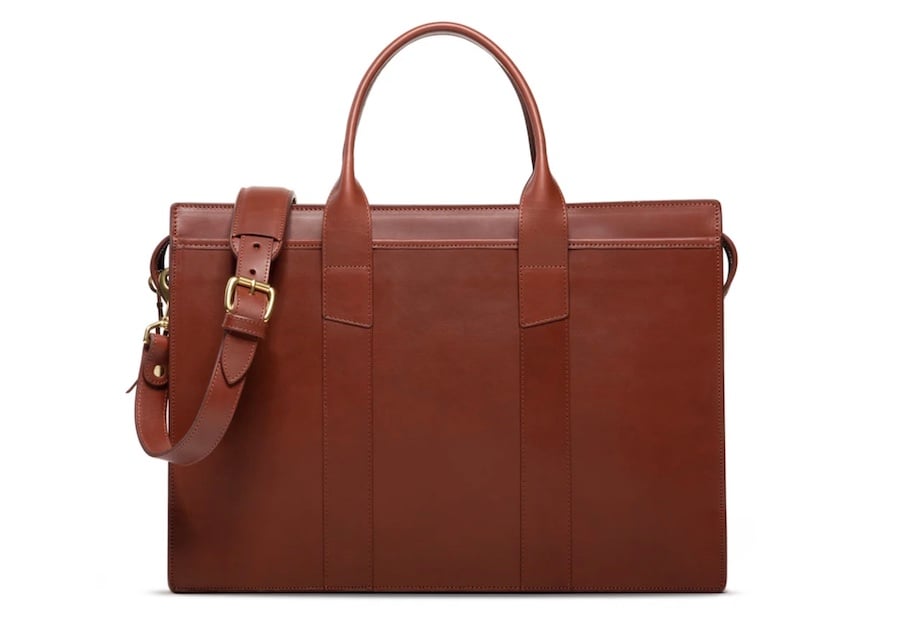
Hard Leather Briefcases
Hard leather briefcases, like the Frank Clegg zip-top briefcase, are perfectly suitable if you need extra protection for your devices and whatever else you’re carrying around. Their rigid structure offers security and durability. They are ideal for traditional professional settings where a more formal and distinguished appearance is preferred. I consider these a great alternative to the stuffy attaché.
Zip-Top Briefcase
A zip-top leather briefcase is often the best option for modern office environments. They provide ease of access with their smooth closure system. Available in both hard and soft varieties, they cater to different preferences, whether it’s the rigidity of a Clegg zip-top or the flexibility of Satchel & Page’s Counselor Briefcase.
Flap-Over Briefcase
The flap-over leather briefcase combines elegance with practicality. The locking mechanism on these briefcases can be satisfying to use, offering both security and style.
It’s easy for these designs to stray into the territory of the casual messenger, so make sure this bag has clean lines and sharp corners if you’re going for formal.
A briefcase for guys who want more out of life, the Flight Bag is purposefully over-engineered with ultra thick leather and hardware — guaranteed for life.
Gladstone Opening
The Gladstone opening is a hinged metal frame that opens wide for easy access to the bag’s contents. This design is reminiscent of traditional doctor’s bags and helps make sure an open bag stays open. It carries a slight risk of warping or bending with use.

The Casual Briefcase
For a more laid-back approach, consider the casual leather briefcase category. Brands like Filson and Cravar offer twill briefcases that blend functionality with a relaxed style. These are made from twill or canvas, but there are plenty of casual leather messenger bags like Saddleback’s Flight Bag and Cravar’s Alpha that you might consider bringing to the office.
5. Compartments
The right briefcase for your needs should have enough compartments, offering flexibility for everything you need to carry, whether a laptop compartment in a rolling briefcase or internal pockets in soft-sided versions. The right briefcase should keep your contents organized and easily accessible.

Laptop and Tablet Compartments
A non-negotiable feature in modern leather briefcases is a dedicated compartment for a laptop or tablet. These compartments are often padded for extra protection and sized to accommodate a range of device sizes.
Internal Pockets
Practically every briefcase will have slip pockets on an interior layer that can organize small items like pens, business cards, notebooks, and bifolds.
Zippered Compartments
I value briefcases with an extra secure zippered pocket for expensive items or just somewhere to keep your coins.
Attachment for Rolling Luggage
An underrated feature that many consider critical. The one on Cravar’s here has a magnet inside it that keeps it flush against the bag when not in use.
Key Ring
Usually a slide-bolt snap ring or carabiner, you’ll wonder how you ever lived without a dedicated clip that keeps you from ever fumbling around for your keys again.
Additional Electronics Storage
Consider briefcases with extra pockets or sleeves for chargers, power banks, and other tech accessories, ensuring that all your electronic essentials are organized and within reach.
Other Useful Features
Some briefcases include expandable sections, which are useful for storing extra items picked up during travel.
For those in rainy climates, a slot or external loop for an umbrella can be a game-changer, keeping it separate from other contents.

External Pockets
External pockets, such as boarding passes, a phone, or a wallet, are useful for easy access.
Zippered Compartments
Secure zippered compartments are essential for storing valuable items or sensitive documents, offering an added layer of security.
6. Briefcase Color
Leather comes in a wide range of colors and tones. It’s important to get a bag that matches your overall style.
Black Leather Briefcases
Ideal for those who frequently wear dark suits or operate in formal business settings. Black leather briefcases are traditionally associated with professionalism and are particularly suitable for grayscale color palettes in attire. They convey a sense of authority and sophistication, making them a classic choice for many professionals.
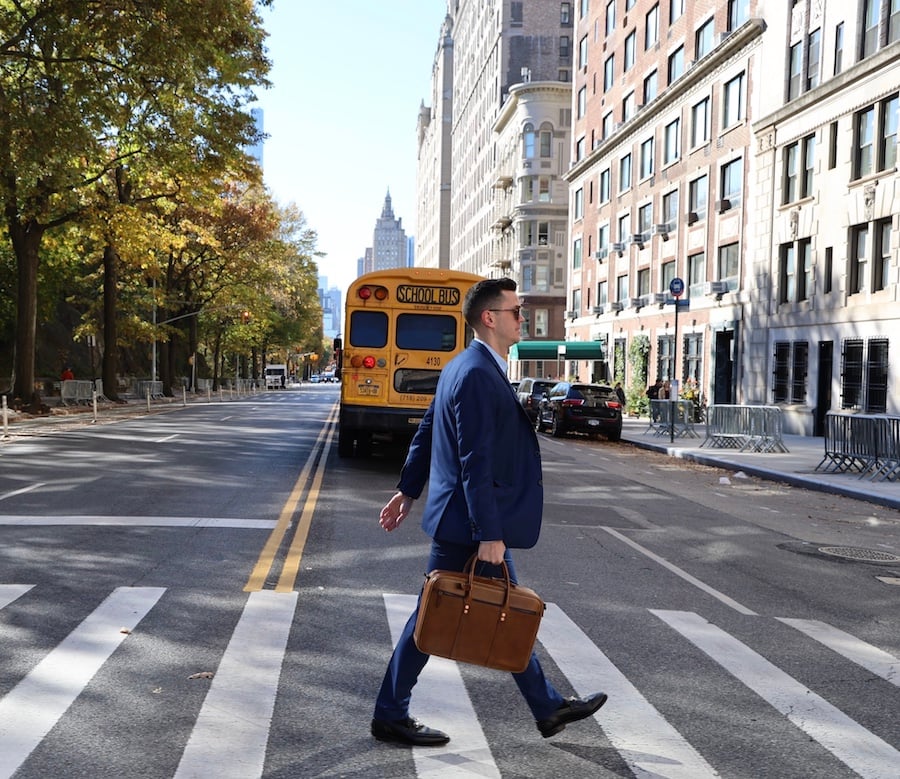
Brown Leather Briefcases
Brown bags offer more versatility than black bags. They work well not only with earth tones but also with a broader range of colors. A brown leather briefcase can complement both formal and semi-formal attire, making it a sensible choice for those who favor versatility in their style. A dark chocolate bag, for example, is suitable for a wide variety of outfits.
There are a wide variety of brown leathers to choose from, including burgundy to orange-brown colored bags.

Tan and Lighter Colors
Tan and lighter colored leather briefcases lean more toward the casual and relaxed end of the spectrum. They are excellent choices for less formal work environments or those wishing to add a personality touch to their professional gear.
These colors pair exceptionally well with earth tones and break the monotony of darker business attire, adding a fresh and approachable vibe to your overall look.
[Related: Brown or Black Boots? Here’s how to decide]
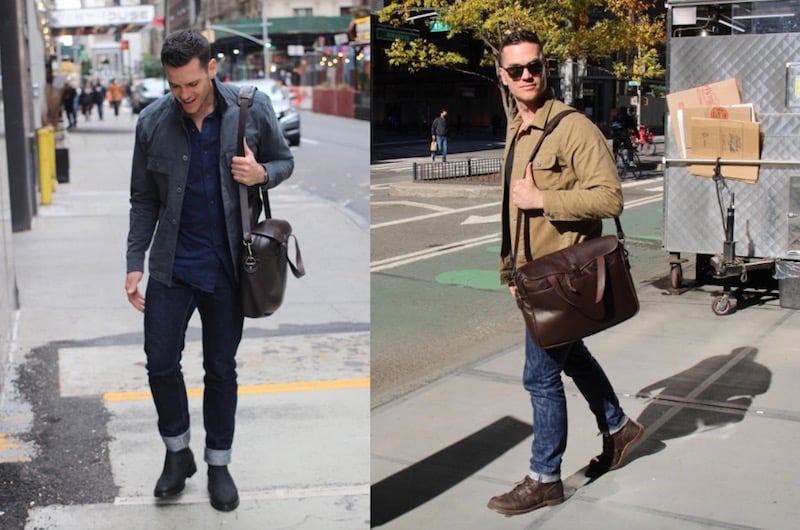
Personal Style and Professional Environment
The color of your briefcase should match your wardrobe. For a cohesive look, consider the dominant colors of your professional attire and choose a briefcase color that complements them. Black for darker suits, brown for less formal offices. A very dark brown is probably the most versatile pick.
Whether you choose the classic elegance of black, the versatile appeal of brown, or the relaxed vibe of tan, your briefcase color can be a statement piece that enhances your professional image.
[Review: Satchel & Page Counselor, a 2-Year Review | The Best Briefcase Leather You’ll Find]
7. Sizing Your Leather Briefcase
A larger bag might be necessary for those who carry multiple devices, documents, and personal items, but you’ll want to make sure that it’s comfortable to carry with one hand or across the shoulder. Conversely, a more compact briefcase is suitable for lighter loads but impractical if you can’t carry the necessary items. List what items you bring to work (is Tupperware one of them?) and purchase accordingly.
The size of the briefcase should also be proportionate to your body frame. A bag too large can look overwhelming on a smaller frame, while a small briefcase might look undersized on a larger individual.

How to Determine Quality Construction
Focus on reinforced stress points such as handles, shoulder straps, and seams, which are essential for longevity, even with top-tier leather and hardware. The type of leather, zippers, and finishing also signal quality.
Stitching
Stitching methods matter: machine stitching is good for thinner leather, using fine threads for a lockstitch, while saddle stitching with a single thread suits thicker leather. Remember, simplicity equates to durability. Opting for fewer threads can enhance strength and longevity. This principle is akin to footwear, where hand-welted boots signal quality, and machine-stitched Goodyear welts are also highly durable.
Further Reading
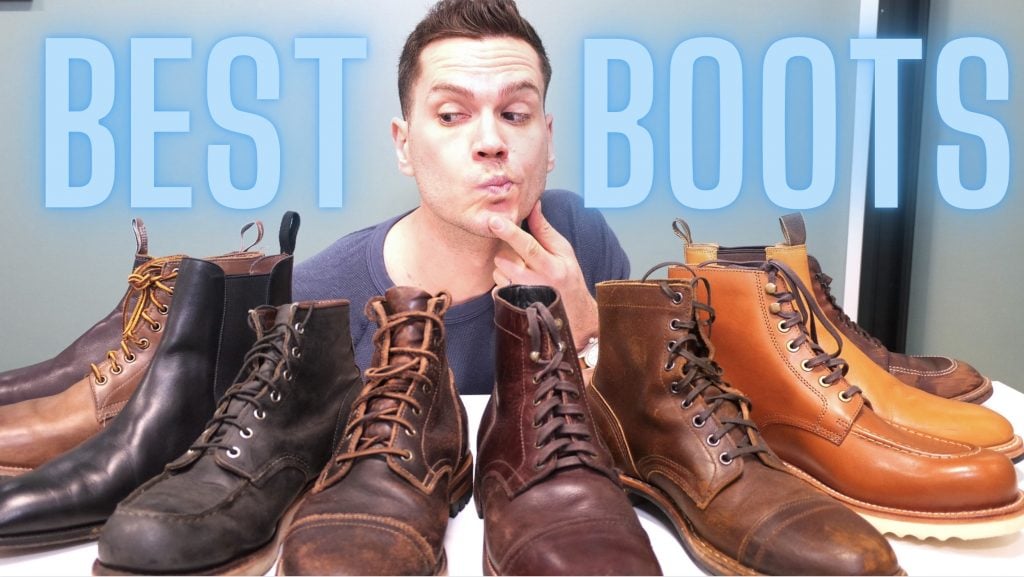
Interested in getting the perfect pair of Goodyear welted boots? Check out how →
Quality Material
The quality of leather used in a briefcase significantly affects its durability and appearance over time. Quality leather improves with age, developing a patina that enhances its aesthetic appeal. Again, the best material is vegetable tanned, full grain leather. It’s not the end of the world if you can’t get either, but our list of the best leather briefcases has many such options.
Beyond the leather, the quality of zippers (the brand YKK is the default), shoulder strap fittings (look for a padded leather shoulder pad), and hardware (brass, copper, or stainless steel rivets) also contribute to the overall construction quality.

Fewer Pieces of Leather
The fewer pieces of leather, the better. Cheaper bags use more of them because it’s easier to find smaller leather pieces than a continuous strip of hide. This is bad for two reasons: seams are ugly, and it gives a bag more places to break.
The bag should use one large piece of leather wherever possible instead of sticking together multiple pieces.

Edge Finishing
Some bags leave their leather edges unfinished (or “raw”), which makes for a more rugged look. Nicer bags will finish their edges in one of a variety of ways: the most common are binding (stitching another piece over the edge), waxing, and burnishing.
There’s no judgment if you prefer unfinished edges, they just make a bag look less dressy — though it does save money. Indeed, Frank Clegg is famous for his bags that cost over $1,000, and he told us he could probably charge half as much if he didn’t spend so much time finishing the edges.
You should complain if a bag costs four figures and the edges aren’t finished. Polishing edges takes time, effort, and skill. This attention to detail sets a mid-tier bag apart from luxury brands.

What to Avoid When Choosing a Leather Briefcase
Don’t get tempted by extremes: price, build, or size. Find something that’ll work for you throughout your career. These bags should literally be built to last.
Focusing Solely On Price
The price shouldn’t be the only deciding factor. Investing in a quality leather bag, even at a higher cost, often means better durability and a more professional appearance in the long run. That said, some brands (like Coach and Prada) charge a ton for features you can get in a briefcase from Carl Friedrik for hundreds of dollars less.
This article, we’re hoping, will arm you with the ability to know what to look for and ask about so you can make sure you’re paying the right amount of money for what you’re getting.
Faux Leather vs. Real Leather Briefcases
Be cautious of faux leather, which may not offer the same quality and longevity as genuine leather briefcases. Vegan leather can be made from a variety of materials, but it’s usually some kind of plastic that will not age well at all. If durability is your concern, look for leather, ideally full grain, ideally vegetable tanned. Ideally with a good warranty.
Signs of Poor Craftsmanship
- Loose threads indicate that the briefcase may not be tightly stitched.
- Poorly sized shoulder straps that are too long or short for comfortable use or are not proportionate to the briefcase size.
- Cheap, low-cost leathers like split-grain can be less durable and less water-resistant. Honestly, if a briefcase is under $300, it’s not good.
- Synthetic materials can signal that the briefcase is low quality. But it’s important to note that not all synthetic materials are inferior. Some high-quality synthetic materials (like Cravar’s Sunbrella or Carl Friedrik’s nylon canvas) can be remarkably durable. It’s up to you as to whether or not “unnatural” materials like these are a deal breaker.
Conclusion
From the basic laptop bag to the luxurious heritage piece, there’s a wide range of options out there. It’s crucial to do your research and choose a briefcase that meets your practical needs and aligns with your personal style and values. Remember, a well-chosen, quality briefcase is not just a practical accessory; it’s a statement about who you are as a professional and signals how well you understand quality.
Follow these tips, and buying a briefcase online will be much easier.
What should I look for in a leather briefcase?
Look for full grain leather, reinforced stress points at the handles and straps, a laptop sleeve, and a style that matches what you'll wear with it.
Is a leather briefcase worth it?
Yes, a leather briefcase is worth it for its durability, classic style, and the way it improves with age, making it a long-lasting investment for professionals. Just ensure it's sturdily made with a solid warranty.
How do I choose a good briefcase?
Choose a briefcase based on the quality of leather, size and storage capacity, the comfort in your hand or on your shoulder, and its suitability to your professional needs and personal style.
What is the best leather to make a briefcase?
The best leather for a briefcase is vegetable tanned leather, which is very durable and ages beautifully.

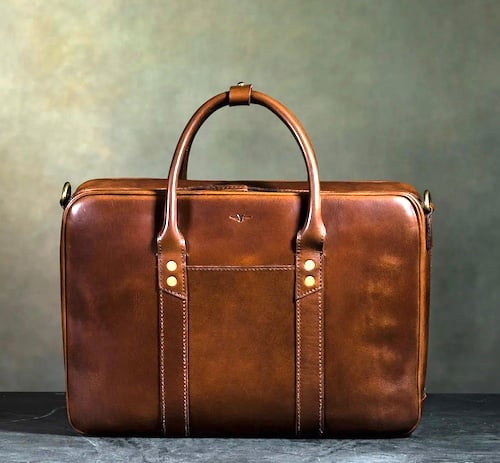
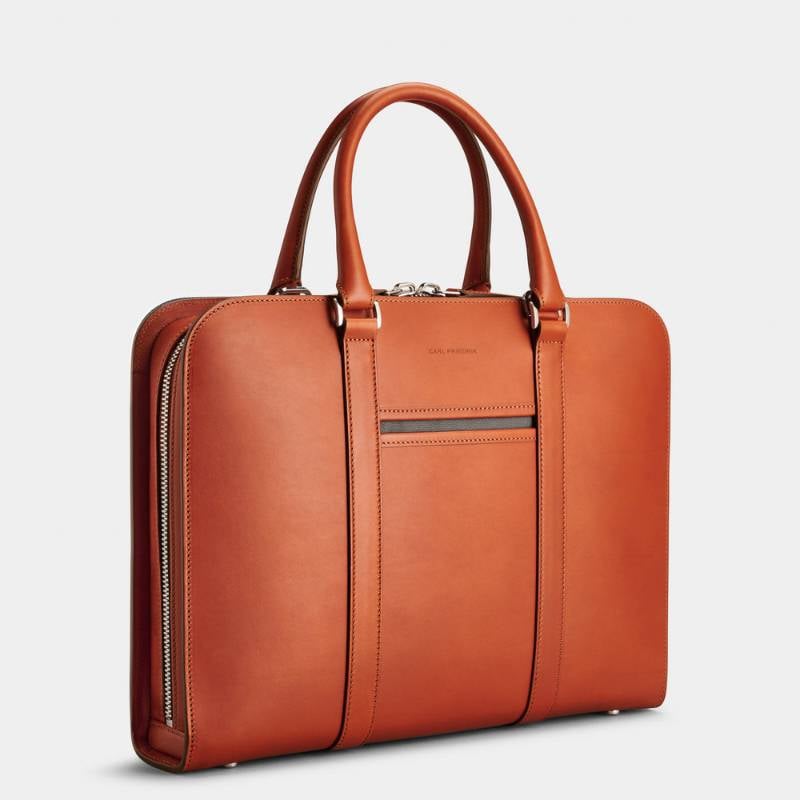

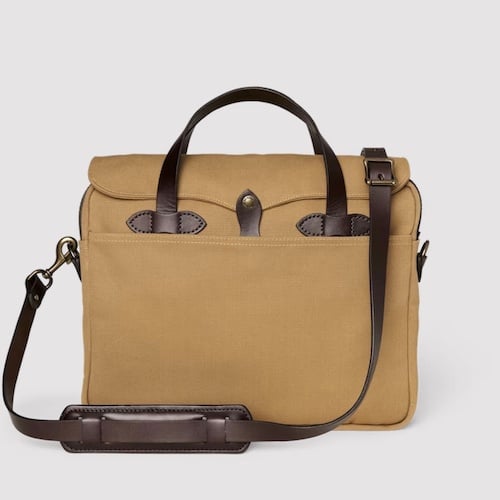
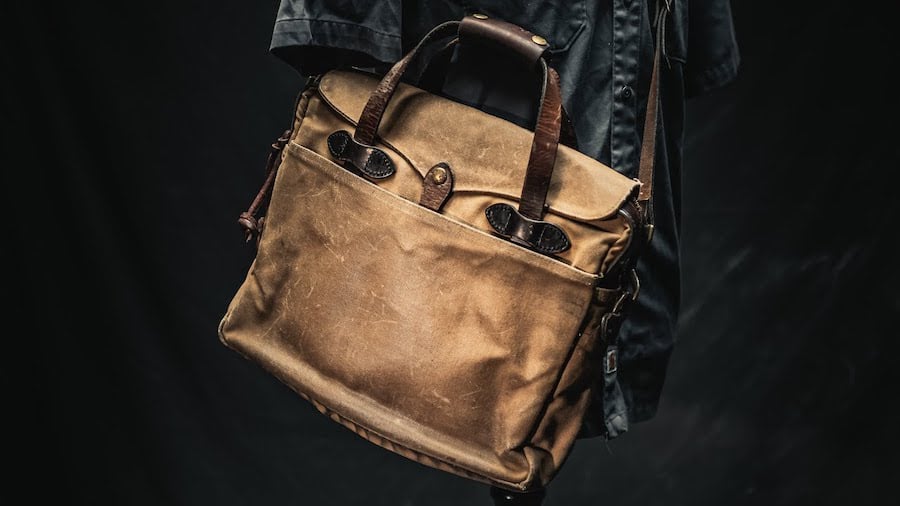

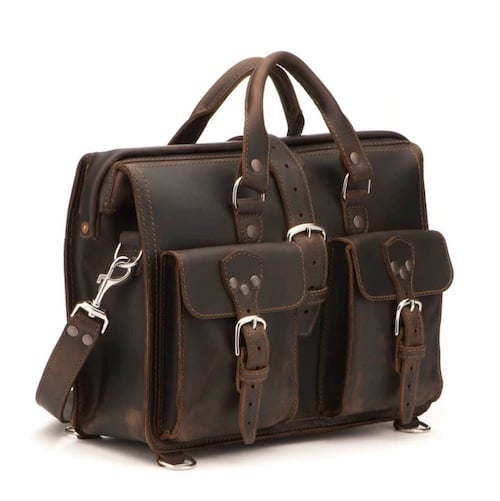


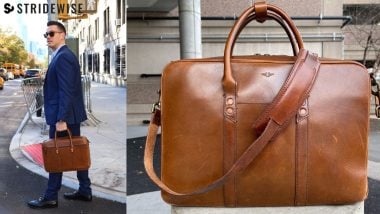
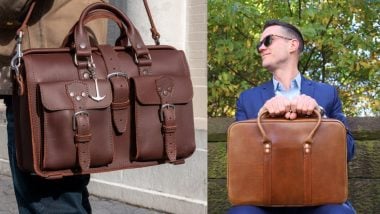
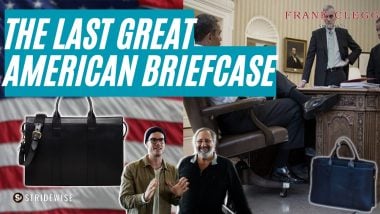

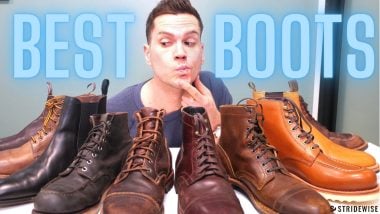
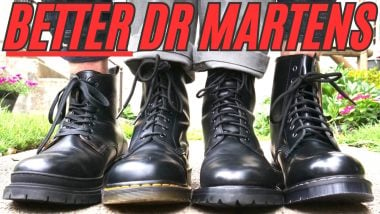

Join the Discussion